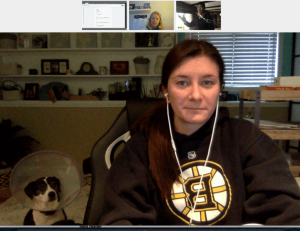By Dan Kraemer
At most companies, whether big or small, there are innovation projects brewing and bubbling. Sometimes they are side-projects started by technical teams, or they are larger initiatives spearheaded by company leaders or division-heads in sales, marketing, or biz dev. Often, these projects aim to create new internal tools to make employees’ jobs easier. Or they are “stretch” projects aimed at solving particularly challenging customer problems.
Either way, they usually are experimental, not always well funded or fully staffed, and sometimes end up flaming out. But they can also turn into blockbuster products that change the course of your company—and your career. Some examples of internal company projects that started out as “crazy ideas” and later became household names include: Post-It Notes, Google Maps, and the PlayStation gaming console.
Whether you are just starting out or already a VP, working on a successful stretch project can leapfrog your career to the next level. But figuring out how to get staffed on such a project can be challenging, as most of these initiatives are not widely communicated across the organization. Here are a few strategies to find, join, and succeed on innovation projects.
Find the innovation projects
Many innovation projects are hush-hush, so finding them can take a bit of sleuthing. To find a project that suits your skills and interests, start by talking to your direct manager and mentioning you’d like to take on some additional work to stretch your learning and development.
If your manager is okay with that, and they usually are, the next step is to speak to the head of your business unit. Ask them what their biggest challenges, problems, and headaches are, and whether anyone is working on potential solutions.
Other people who are close to innovation projects, or who want to get them started, include heads of corporate strategy, directors of new ventures, chief digital officers, and product leads. Don’t be afraid to reach out to them and offer your expertise.
Figure out which projects are rocket ships
Projects that have potential are those that are cross-disciplinary and focused on solving a concrete problem, either for internal teams or external customers. Projects that are likely to fester and then flame out include pet projects and “problems looking for solutions.”
To tell the difference, ask as many questions as possible.
Make yourself indispensable
The most promising innovation projects will likely have plenty of people interested in joining them. So once you pick a project you’d like to join, then it’s time to sell yourself. Review as much as possible about the project: scope, documentation, plans, contributors, etc. Then think carefully about how your expertise could take the project to the next level, and where you might need to upskill to become a stronger collaborator. It may make sense to take a few technical certification training courses, for example. Once you’re sure of your place on the project, approach the team lead with a one-page proposal outlining exactly how you would contribute. And don’t forget to clearly outline how you will fit this extra work into your existing job; you may need permission from your supervisor and you will likely need to work evenings and weekends.
Become the contributor everyone can rely on
Once you get the okay to join an innovation project, don’t let the opportunity go to waste. This is your opportunity to stretch yourself to create something that could alter the trajectory of your company–and your career. Make sure everyone on the project knows what you plan to contribute and then do that, and then do extra. Some areas where you could add extra value, no matter what the project, include creating a user-centered development plan that puts the customer at the center of the product; conducting customer research, observations, and focus groups; and designing push-the-boundary prototypes outside the scope of the original project.
Before Amazon Go or the Starbucks mobile app existed, individuals in those companies had the bold ideas to build these products from scratch. Sometimes breakthrough products are instigated by Chief Innovation Officers, but more often than not, they bubble up from people on technical or strategy teams. Working on innovation projects is exciting, but can also be frustrating–since so many start out with a bang and end with a whimper. When you raise your hand to join a stretch project, you take on not just extra work, but extra risk. Remember, even if the project fails, you have adopted a risk-taking mindset. And that paves the way for outsized career growth.
(8)










